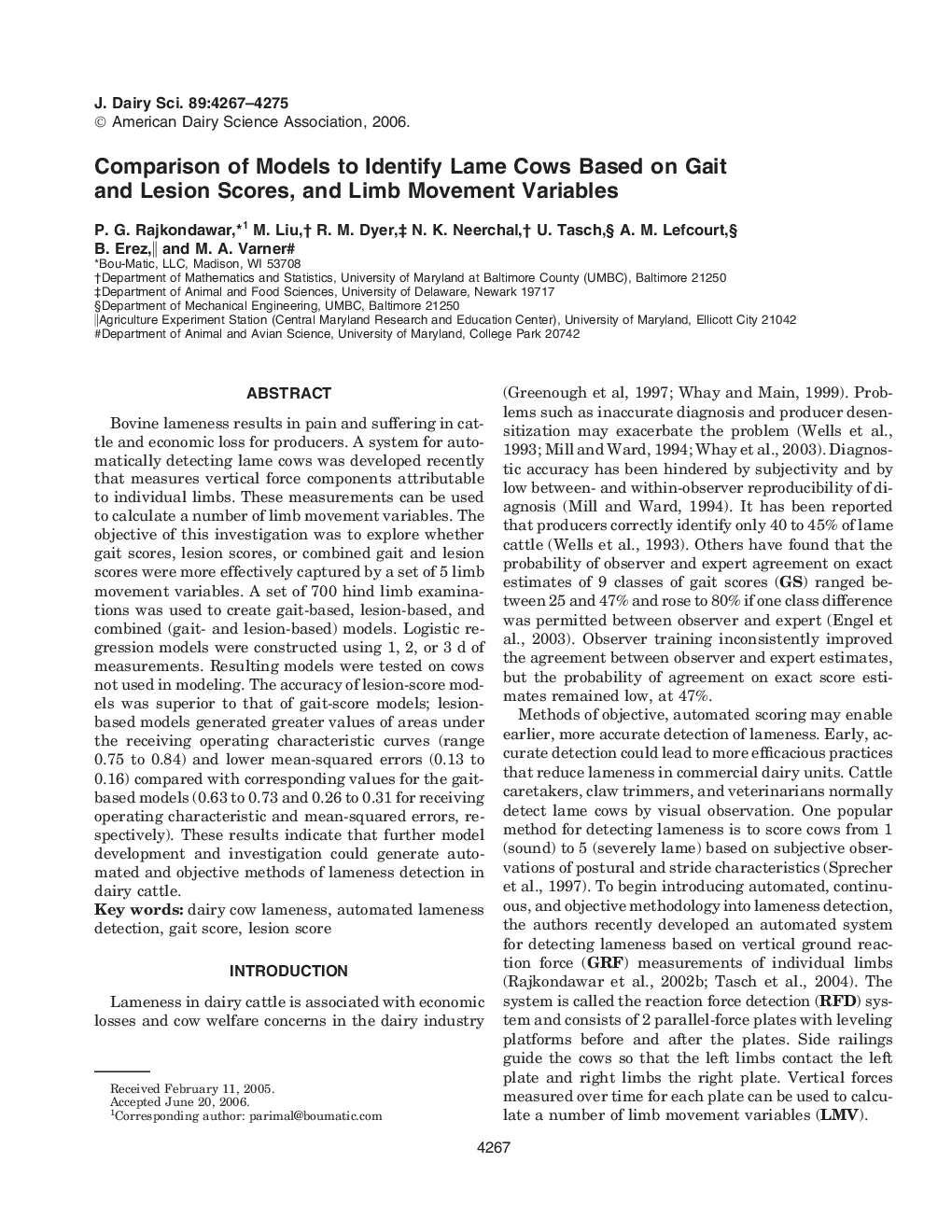| Article ID | Journal | Published Year | Pages | File Type |
|---|---|---|---|---|
| 2441053 | Journal of Dairy Science | 2006 | 9 Pages |
Abstract
Bovine lameness results in pain and suffering in cattle and economic loss for producers. A system for automatically detecting lame cows was developed recently that measures vertical force components attributable to individual limbs. These measurements can be used to calculate a number of limb movement variables. The objective of this investigation was to explore whether gait scores, lesion scores, or combined gait and lesion scores were more effectively captured by a set of 5 limb movement variables. A set of 700 hind limb examinations was used to create gait-based, lesion-based, and combined (gait- and lesion-based) models. Logistic regression models were constructed using 1, 2, or 3 d of measurements. Resulting models were tested on cows not used in modeling. The accuracy of lesion-score models was superior to that of gait-score models; lesion-based models generated greater values of areas under the receiving operating characteristic curves (range 0.75 to 0.84) and lower mean-squared errors (0.13 to 0.16) compared with corresponding values for the gait-based models (0.63 to 0.73 and 0.26 to 0.31 for receiving operating characteristic and mean-squared errors, respectively). These results indicate that further model development and investigation could generate automated and objective methods of lameness detection in dairy cattle.
Keywords
Related Topics
Life Sciences
Agricultural and Biological Sciences
Animal Science and Zoology
Authors
P.G. Rajkondawar, M. Liu, R.M. Dyer, N.K. Neerchal, U. Tasch, A.M. Lefcourt, B. Erez, M.A. Varner,
